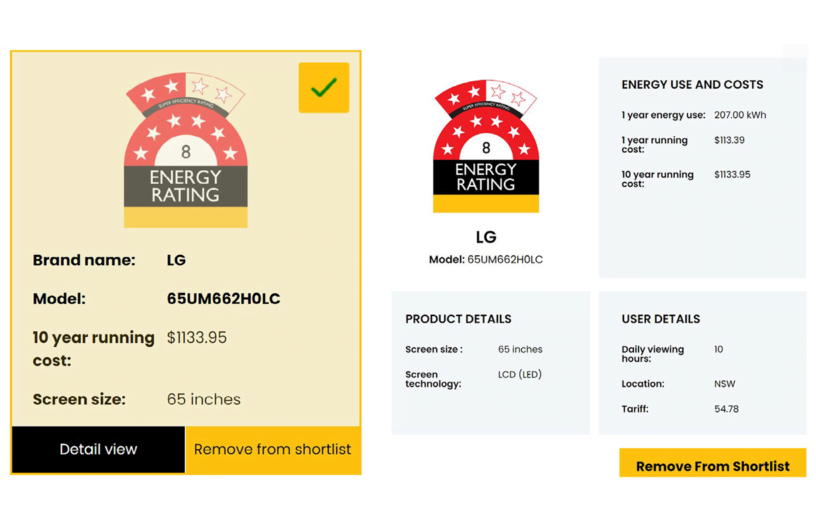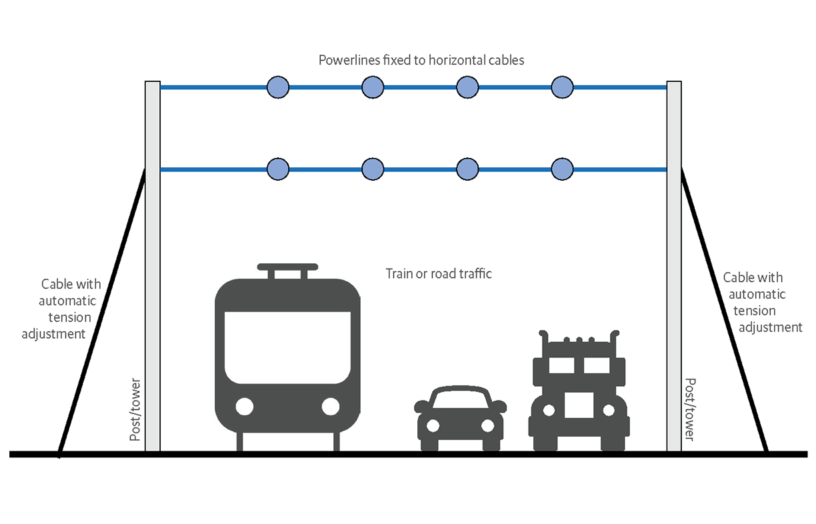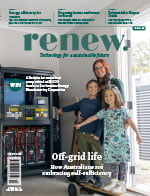Energy costs, climate impacts and quality of life
Alan Pears gives us his round-up of the main energy issues this quarter.
Government’s ‘future gas’ strategy released
Quite a few people I have talked with about this document feel it is ‘Labor’s last straw’ on climate. Clearly the Australian Labor government is hostage to powerful interest groups who place their profit above humanity’s future. Government leaders have even been prepared to blindside Labor parliamentary members. This is not the way to govern Australia.
In my extensive submission to the consultation process in November last year, on-line at Make a submission – Future Gas Strategy: consultation paper – Consult hub (industry.gov.au) (consult.industry.gov.au/future-gas-strategy/survey/view/60) I mapped out serious problems such as enormous over-estimation of the amount of high temperature industrial heat that isn’t easily electrified.
Unfortunately the software used to save my submission deleted all the graphs in my submission, undermining the potential for readers (including policy makers?) to understand my arguments. I am happy to send the original submission if I am contacted at alan.pears@rmit.edu.au
I flagged deep concerns about this process. The introduction to my submission stated:
“I do not understand how a government agency can write a paper on the future of gas without seriously analysing how and why people now use gas, and how many disruptive forces might impact on attitudes to and usage of gas. Demand for energy is a ‘derived need’, which depends on the nature of demand and the technologies used to deliver services.
“Indeed, consumers don’t want energy (or technology) for its own sake – they want services they perceive to be valuable or necessary, whether it be to deliver the materials, products or services they sell or to support their lifestyles.
“In most cases, energy is a small proportion of input costs, even though it dominates Australian climate impacts, so much existing societal behaviour is ‘economically rational’, while the approaches of energy policy makers reflect ‘bounded rationality’. Publishing this paper before the demand-side studies are carried out inappropriately distorts the framing of policy-making.”
Many other analysts, (e.g. IEEFA, ClimateWorks etc.) have exposed deep flaws in the proposals in the strategy. The document seems to have been very carefully written to acknowledge issues, then play down concerns or different views. Presentations by global energy guru Amory Lovins at the recent Energy Efficiency Council Conference, among many others, highlight the gulf between economically, socially and environmentally sound energy policy and the fossil fuel fantasy presented in this government’s gas strategy.
We need a portable electricity storage transport fleet
Recent US research (see nature.com/articles/s41560-023-01284-x) has shown that ‘battery trains’ can deliver substantial amounts of electricity at relatively low prices. My limited analysis suggests that electrically powered B-double trucks could also make financial sense in some situations. And battery storage density is improving, so the economics of this approach will continue to improve.
These options offer new ways of addressing many issues in our present electricity system by complementing existing electricity transmission and other infrastructure. Particularly in regions where high electricity demand is for short periods, this avoids investment in expensive infrastructure that will be under-utilised for much of the time and will drive high fixed supply charges.
Some examples include:
- A renewable energy generator that has its exports constrained by limited transmission capacity or delays in connection to the grid
- A community where the power supply has failed or wind, fires or floods have damaged supply lines
- Agricultural businesses that have high electricity demand during harvesting
- Tourism regions and events where demand is much higher for short periods of time
- EV charging in rural areas during times of high traffic such as school holidays or major events, or for large trucks on major freight routes
- Reduction of impacts of grid congestion
- When not needed for the above purposes, portable batteries can be located at critical points in grids or behind the meter for consumers to provide similar services to permanently located batteries
- We need to focus more on increasing utilisation and flexibility of energy assets to optimise costs and system reliability.
The dissonance between energy costs, climate impacts, quality of life and productivity
Fossil fuels produce over 80 percent of Australia’s annual carbon emissions. But visible gas and electricity are typically less than 5 percent of business and household input costs. Costs of upstream energy waste are masked within the overall costs of inputs, so businesses ignore them. Yet they are much larger than their visible energy costs.
A large proportion of energy costs are fixed charges that energy retailers use to shift risk of declining energy consumption to consumers.
So it’s not surprising that we are failing to curtail emissions and energy costs. Network operators push up fixed supply charges when we fail to cut peak demand, as we focus on renewable energy supply as a ‘silver bullet’ instead of efficiency and smart management.
Energy efficiency is still Australia’s ‘forgotten fuel’ It is so sad that Australian energy policy continues to treat energy efficiency as a side issue. The focus is still on renewable energy supply, energy storage, upgrading transmission and building more poles and wires for networks.
It’s all mad. But widespread acceptance of madness becomes normality. Energy forecasts seem to ignore the disruptive innovations underway.
Some interesting and potentially powerful changes are emerging. Increasingly, large businesses are being encouraged and even required (e.g. by APRA) to report their ‘Scope 3’ carbon emissions—the emissions of their supply chains and customers that they influence but do not control. This is driving pressure on smaller businesses in supply chains, as well as emission intensive industries, to cut their emissions.
The government’s Safeguard Mechanism may also have surprising impacts. It focuses on Scope 1 emission — mainly diesel, gas and coal burnt on-site. It also offers a simplified carbon trading mechanism among scheme participants. I suspect that some businesses will be able to achieve big reductions through energy efficiency and renewable electrification, creating a lot of credits they can sell to the ‘hard to abate’ businesses. Also, as miners and others cut their diesel fuel use, the cost to government of the widely criticised diesel fuel subsidy will fall, giving government a windfall saving.
My big picture thinking on sustainable cities
If you have an hour to spare and want to explore sustainable city futures, you may find this podcast interesting. I cover a lot of ground! shorturl.at/jdQQU
Making the most of existing hydro-electricity and transmission assets
There is increasing recognition that we will need ‘deep’ or seasonal electricity storage to complement short term storage such as batteries as we transition from gas and shut down coal and gas-fired generation. But most proposals focus on specific projects or technologies, such as pumped hydro.
A recent paper I co-wrote with Amandine Denis-Ryan (ieefa.org/resources/optimising-battery-nation) explored the subtleties of the interactions between Tasmania’s hydroelectricity system, use of the Basslink cable, upgrading of Tasmanian building and appliance energy efficiency, and smart partnerships with mainland big batteries.
In recent years, Tasmania has made a lot of money buying cheap and even negatively-priced electricity from the mainland, especially in sunny weather, to displace use of their existing hydro generation capacity. This ‘hoarded’ water is then used to generate electricity to sell to Victoria in winter, when wholesale electricity prices are much higher. This ‘arbitrage’ is basically how big batteries make profits.
We found that, if Tasmanian building and appliance efficiencies were improved, many households and businesses would benefit from improved health, comfort, productivity and lower bills. This would also support seasonal hoarding of more stored water so more electricity could be sold to the mainland at high prices in winter. We also found that Basslink could be better utilised if mainland batteries could be ‘trickle-charged’ at times of low demand in winter, so they could play a bigger role in multi-day shortages driven by low solar generation and cold weather.
Smart, integrated use of energy efficiency, stored water, batteries, powerlines and demand management can offer much more benefit when combined.
Further reading
 Pears Report
Pears Report
Fossil fuels, efficiency and TVs
Alan Pears brings us the latest news and analysis from the energy sector.
Read more Climate change
Climate change
What we can learn from Spain’s response to heatwaves
As Australia heads into a summer set to be marked by climate change and El Niño, resilience to extreme heat is front of mind. Renew’s Policy and Advocacy Manager Rob McLeod reports on Spanish responses to heatwaves and the lessons for Australia.
Read more Pears Report
Pears Report
Transmission and emissions
Alan Pears brings us the latest news and analysis from the energy sector.
Read more

